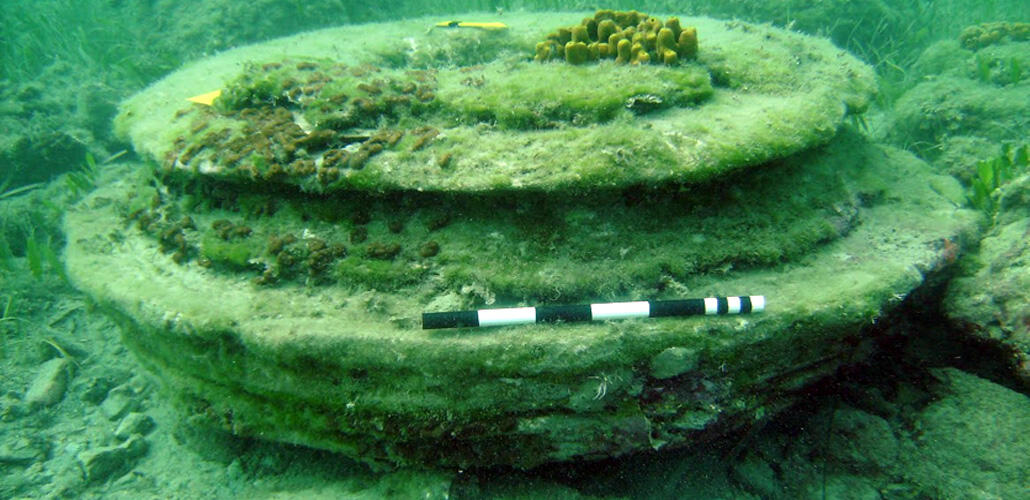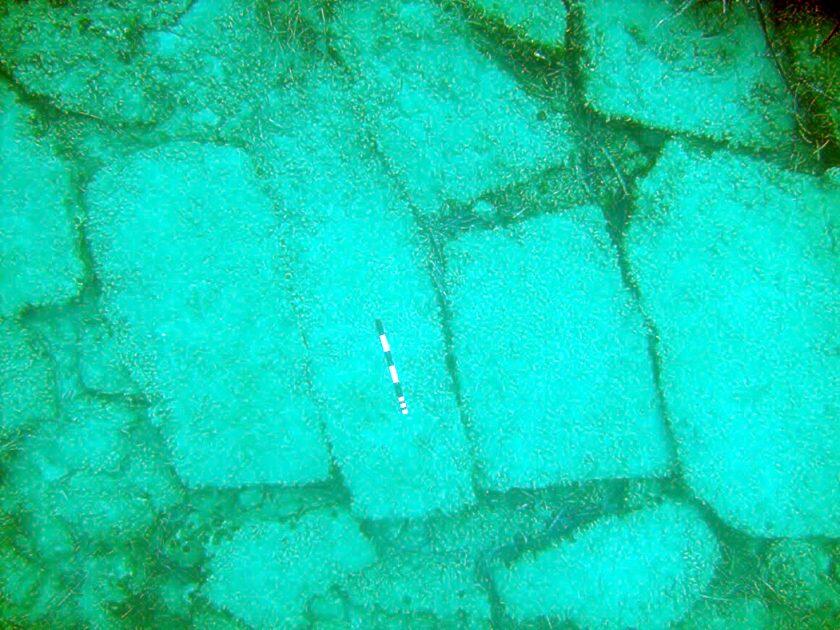Pipe-like, disc and doughnut-shaped structures discovered by underwater divers near the island of Zakynthos, Greece, were originally believed to be ruins of an ancient city, such as remnants of paved floors, courtyards and columns.
The ancient underwater remains of a long lost Greek city were in fact created by a naturally occurring phenomenon – according to joint research from the University of East Anglia (UK) and the University of Athens (Greece).
But new research reveals that the site was created by a natural geological phenomenon that took place in the Pliocene era – up to five million years ago.
“The site was discovered by snorkelers and first thought to be an ancient city port, lost to the sea. There were what superficially looked like circular column bases, and paved floors. But mysteriously no other signs of life – such as pottery.” said Lead author Prof Julian Andrews, from UEA’s School of Environmental Sciences.
Archaeologist Magda Athanasoula and diver Petros Tsampourakis studied the site, together with Prof Michael Stamatakis from the Department of Geology and Geoenvironment at the University of Athens (UoA).
The ancient underwater remains of a long lost Greek city were in fact created by a naturally occurring phenomenon — according to joint research from the University of East Anglia and the University of Athens (Greece).Credit: University of Athens.
The research team went on to investigate in detail the mineral content and texture of the underwater formation in minute detail, using microscopy, X-ray and stable isotope techniques.
Prof Andrews said: “We investigated the site, which is between two and five meters under water, and found that it is actually a natural geologically occurring phenomenon”.
“We found that the linear distribution of these doughnut shaped concretions is likely the result of a sub-surface fault which has not fully ruptured the surface of the sea bed. The fault allowed gases, particularly methane, to escape from depth.”
So, the mystery is solved, the site is not in fact an ancient, underwater city. After hearing of the scientific explanation behind the mysterious formations, discoverer Voutos continued to insist they were created by a lost civilisation.
He wrote on his Facebook page: “I don’t like my intelligence to be belittled. I want serious answers from serious scientists. I am very worried about the future of this mysterious place.”












